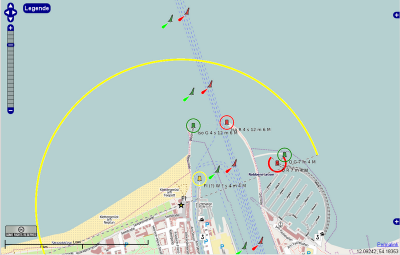Main Page: Unterschied zwischen den Versionen
| Zeile 29: | Zeile 29: | ||
OpenSeaMap is an open Sea Map, and also open for future developments. The basemap is rendered using the OpenStreetMap-data. This map is extended with nautical data that is saved in the OSM-Database as well. OpenLayers is used to overlay additional nautical Information, which can be displayed in a popup by clicking on the map. | OpenSeaMap is an open Sea Map, and also open for future developments. The basemap is rendered using the OpenStreetMap-data. This map is extended with nautical data that is saved in the OSM-Database as well. OpenLayers is used to overlay additional nautical Information, which can be displayed in a popup by clicking on the map. | ||
| − | |||
| − | |||
| − | |||
| − | |||
| − | |||
| − | |||
| − | |||
| − | |||
| − | |||
| − | |||
| − | |||
| − | |||
== Contact == | == Contact == | ||
| Zeile 70: | Zeile 58: | ||
---- | ---- | ||
[[OpenSeaMap-dev:Portal|Developer area]] | [[OpenSeaMap-dev:Portal|Developer area]] | ||
| + | |||
| + | ==Data model== | ||
| + | The data scheme applies to the international norm [http://www.iho.int/iho_pubs/standard/S-57Ed3.1/31Main.pdf IHO-S-57], as published by the IHO. This allows a simple exchange of data with other ECDIS-Applications. Because of the complexity of attributing seamarks, there will be (unlike the usual OSM procedure) a strict separation between database as backend and the frontend, to allow users to input data without knowing S-57. A graphical user interface will be provided in the form of three editors. | ||
| + | The depth data is stored in a separate database and is using PostGIS | ||
| + | |||
== Languages == | == Languages == | ||
Version vom 5. Mai 2015, 11:44 Uhr
| Deutsch | English |
|---|
OpenSeaMap is a worldwide open source project for creation of a free nautical chart.
Inhaltsverzeichnis
History and fundamentals
OpenSeaMap was created in 2009 in response to a great need for freely-accessible seafaring maps. OpenSeaMap's goal is to add nautical and tourism information that would interest sailors OSM, and to present it in a pleasing way. This includes beacons, buoys and other seamarks, port information, repair shops, ship supplies and much more, but also shops, restaurants and places of interest. OpenSeaMap is part of OpenStreetMap and uses its database.
OpenSeaMap is an open Sea Map, and also open for future developments. The basemap is rendered using the OpenStreetMap-data. This map is extended with nautical data that is saved in the OSM-Database as well. OpenLayers is used to overlay additional nautical Information, which can be displayed in a popup by clicking on the map.
Contact
- Forum

 - all about OpenSeaMap
- all about OpenSeaMap - OpenSeaMap-develop
 - Mailing-list for developers Archive
- Mailing-list for developers Archive
This Wiki
Data model
The data scheme applies to the international norm IHO-S-57, as published by the IHO. This allows a simple exchange of data with other ECDIS-Applications. Because of the complexity of attributing seamarks, there will be (unlike the usual OSM procedure) a strict separation between database as backend and the frontend, to allow users to input data without knowing S-57. A graphical user interface will be provided in the form of three editors. The depth data is stored in a separate database and is using PostGIS
Languages
OpenSeaMap is multilingual.
The Website is available in German, English, French, Italian, Spanish and Russian.
This Wiki and the Online-Editor is currently only available in German and English.
If you're interested in translating something to your language please contact us.
